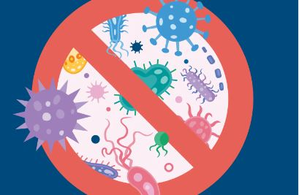Oyster blood protein helps fight against superbugs: Study
Sydney, Jan 21, 2025, IANS
 Sydney, Jan 21 (IANS) A protein found in the blood of Australian oysters could help in the fight against antibiotic-resistant superbugs, according to a study published on Tuesday. The study led by a team from Australia's Southern Cross University (SCU) discovered that a protein in the blood of the Sydney rock oyster is capable of killing bacteria as well as increasing the effectiveness of some antibiotics against a range of bacteria, Xinhua news agency reported. In laboratory tests, they found that the protein was effective at killing Streptococcus pneumoniae and Streptococcus pyogenes, the bacteria that cause pneumonia and strep throat, respectively. When used with antibiotics, the protein made them between two and 32 times more effective at killing the bacteria Staphylococcus aureus and Pseudomonas aeruginosa. The researchers said that the study supported the potential use of natural products from oysters to treat bacterial infections. They found that the protein is not toxic to human cells, indicating that it should be possible to optimise a safe antibiotic from oyster blood. Antimicrobial-resistant (AMR) superbugs, bacteria, viruses, fungi, and parasites that no longer respond to antibiotics designed to kill them, have been identified as a major threat to global public health. According to the World Health Organization, infections that have developed AMR can be difficult or impossible to treat, increasing the risk of disease spread, severe illness, disability, and death. The research team found that the oyster protein can kill bacterial pathogens in biofilms, communities of organisms that stick together, enabling them to evade antibiotics and the human immune system. "The oyster hemolymph proteins were found to prevent biofilm formation and disrupt biofilms, so the bacteria remain available to antibiotic exposure at lower doses," said co-author Kirsten Benkendorff from SCU's Faculty of Science and Engineering. She said that the discovery provided a great opportunity for researchers and the aquaculture and pharmaceutical industries to collaborate on developing a new antibiotic.
Sydney, Jan 21 (IANS) A protein found in the blood of Australian oysters could help in the fight against antibiotic-resistant superbugs, according to a study published on Tuesday. The study led by a team from Australia's Southern Cross University (SCU) discovered that a protein in the blood of the Sydney rock oyster is capable of killing bacteria as well as increasing the effectiveness of some antibiotics against a range of bacteria, Xinhua news agency reported. In laboratory tests, they found that the protein was effective at killing Streptococcus pneumoniae and Streptococcus pyogenes, the bacteria that cause pneumonia and strep throat, respectively. When used with antibiotics, the protein made them between two and 32 times more effective at killing the bacteria Staphylococcus aureus and Pseudomonas aeruginosa. The researchers said that the study supported the potential use of natural products from oysters to treat bacterial infections. They found that the protein is not toxic to human cells, indicating that it should be possible to optimise a safe antibiotic from oyster blood. Antimicrobial-resistant (AMR) superbugs, bacteria, viruses, fungi, and parasites that no longer respond to antibiotics designed to kill them, have been identified as a major threat to global public health. According to the World Health Organization, infections that have developed AMR can be difficult or impossible to treat, increasing the risk of disease spread, severe illness, disability, and death. The research team found that the oyster protein can kill bacterial pathogens in biofilms, communities of organisms that stick together, enabling them to evade antibiotics and the human immune system. "The oyster hemolymph proteins were found to prevent biofilm formation and disrupt biofilms, so the bacteria remain available to antibiotic exposure at lower doses," said co-author Kirsten Benkendorff from SCU's Faculty of Science and Engineering. She said that the discovery provided a great opportunity for researchers and the aquaculture and pharmaceutical industries to collaborate on developing a new antibiotic.